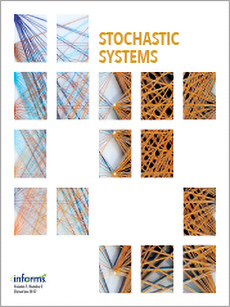Abstract
We analyze the error between a discretely rebalanced portfolio and its continuously rebalanced counterpart in the presence of jumps or mean-reversion in the underlying asset dynamics. With discrete rebalancing, the portfolio’s composition is restored to a set of fixed target weights at discrete intervals; with continuous rebalancing, the target weights are maintained at all times. We examine the difference between the two portfolios as the number of discrete rebalancing dates increases. With either mean reversion or jumps, we derive the limiting variance of the relative error between the two portfolios. With mean reversion and no jumps, we show that the scaled limiting error is asymptotically normal and independent of the level of the continuously rebalanced portfolio. With jumps, the scaled relative error converges in distribution to the sum of a normal random variable and a compound Poisson random variable. For both the mean-reverting and jump-diffusion cases, we derive “volatility adjustments” to improve the approximation of the discretely rebalanced portfolio by the continuously rebalanced portfolio, based on on the limiting covariance between the relative rebalancing error and the level of the continuously rebalanced portfolio. These results are based on strong approximation results for jump-diffusion processes.
Citation
Paul Glasserman. Xingbo Xu. "Portfolio rebalancing error with jumps and mean reversion in asset prices." Stoch. Syst. 1 (1) 109 - 145, 2011. https://doi.org/10.1214/10-SSY015
Information





